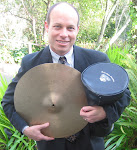 |
| NYT Picture |
Marin Clean Energy is now offering 100 percent clean energy, so, in theory, a Marin County (Northern California) driver can go to work without putting any carbon in the atmosphere or buying foreign oil. Gas prices are irrelevant. How nice!
Unfortunately, the original problems of battery-driven cars remain: charge time, range, and price. I rarely have four hours free, and when I do I would not choose to waste this precious time at a charging station. Perhaps I could charge from home while I slept if I lived in a house with an attached garage, but I do not. My owners' association would not approve of a large extension cord traveling from my condo to the garage.
Secondly, the estimated driving range of the car is 76-90 miles. My commute is 16 miles each way, so I could go to work for only two days without needing to include time for a charge. I could not use the car at all for a longer trip, let's say to lake Lake Tahoe, without researching the location of charging stations, necessary every 85 minutes or so of freeway driving. It can be done, but charging stations are not yet as ubiquitous as gas stations. However, a day trip, let's say to Los Angeles, would take at least eight hours longer than a trip using a gas-powered vehicle. So the Ford Focus electric is best used for local trips to the store or for errands. Why bother to use the car? I walk or ride my bike to pick up a few groceries or see the dentist.
Lastly, the Ford Focus Electric is expensive, $30,000 after the federal tax credit and California rebate. That's unaffordable for most middle class drivers. Hybrids are cheaper and don't have range problems.




No comments:
Post a Comment